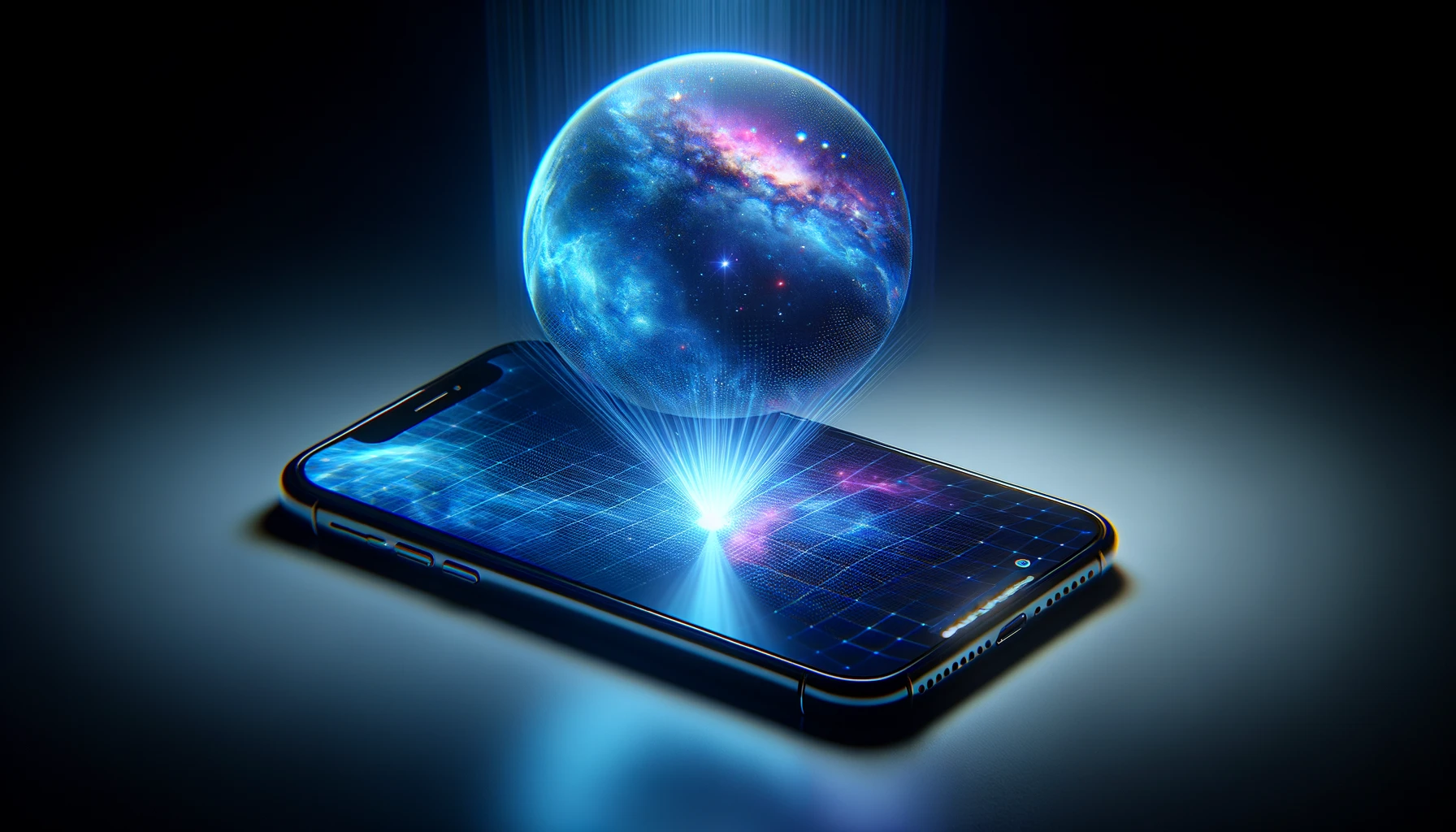Now you can use iPhone into VR projector as in a breakthrough for virtual reality technology, researchers have unveiled a new algorithm that allows iPhones to function as holographic projectors, marking a pivotal shift in the VR landscape and expanding the capabilities of consumer smartphones.
Developed by a team of computer scientists, this innovative algorithm harnesses the advanced processing power of modern iPhones to project high-quality 3D holograms into the physical space around the user. This advancement is not just a step forward; it’s a quantum leap that could democratize virtual reality experiences, eliminating the need for expensive, dedicated VR headsets.
The researchers shared that their primary goal was to make immersive virtual reality more accessible and seamless for everyday use. By turning a device that’s already in millions of pockets around the globe into a potent VR machine, they are poised to bring a once niche technology to a vast audience.
Functionality and Potential Applications to use iPhone into VR projector
The holographic projection works through a sophisticated manipulation of light and optics, controlled by the iPhone’s hardware. The algorithm adjusts the display output and interfaces dynamically with the phone’s built-in sensors to create interactive 3D projections that users can control with simple gestures.
The potential applications of this technology are boundless. In education, for instance, students could explore 3D models of biological structures or historical artifacts up close. For the entertainment industry, it could mean the ability to watch concerts and movies in three-dimensional space from the comfort of home.
Implications for the Tech Industry
This development is expected to spur significant innovation in app development, with companies eager to tap into the new capabilities of iPhones. Already, major tech players and startups alike are exploring potential apps that could leverage this technology for games, professional tools, and social media experiences.
Moreover, the accessibility of such technology could drive competitors to develop similar or superior solutions, potentially leading to a new race in smartphone capabilities centered around augmented and virtual reality—areas that have been poised for consumer breakthroughs for years.
What’s Next?
As this technology rolls out, further improvements and iterations of the algorithm are expected. The researchers are also exploring compatibility with other smartphone models and operating systems, aiming to expand the reach of their groundbreaking work.
With the lines between physical and digital continuing to blur, the introduction of holographic projection capabilities to iPhones is a clear indicator of where the future of personal technology is headed. As we stand on the brink of this new reality, the implications for both users and the broader tech industry are profound and exciting.




